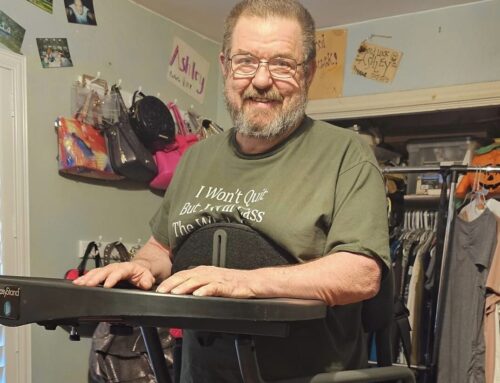Don’t like that nasty, rundown apartment building in your neighborhood?
Getting a little tired of the neighbor who hasn’t painted his duplex (formerly a single-family home) during the past 30 years and whose air-conditioning consists of missing windows and see-through siding?
Just plain sick and tired of the neighborhood convenience store that specializes in beer and beatings?
The City of Dallas has just the tonic for you: The Terminator, a little-known, 40-year-old ordinance designed to help residents clean up their neighborhoods of uses that, quite simply, don’t fit in.
All you need is a $500 check, a poorly operated or maintained neighboring property that isn’t properly zoned, and the patience and intestinal fortitude of Job.
And someday, if you’re lucky, you’ll have survived the name-calling, not-so-subtle intimidation and downright threats that come with hitting a property owner where it hurts most – in the pocketbook.
Whatever the result, someone loses – either the property owner loses an asset or the residents lose the fight to reclaim their neighborhood.
Many neighborhood residents are learning first-hand how complicated, but at the same time beneficial, this ordinance can be.
Just ask Keith Jackson.
The Munger Place Homeowners Association has used what is referred to as the “termination” ordinance several times, according to Jackson, the group’s past president.
(You may also associate the ordinance with the well-publicized, recent travails of City Councilman Craig McDaniel, whose Junius Heights apartment building was shut down by a group of neighbors using the ordinance.)
The first time the Munger Place group used the ordinance was a text-book case. The neighborhood, southeast of the Lakewood Country Club, shut down a group-home that was operating in a single-family zoned lot. The process worked for the neighborhood, Jackson says: The structure was torn down, and a home was built in its place.
“On the particular property, it worked beautifully,” Jackson says. “It did what it was supposed to do.”
But when the homeowners association decided to use the ordinance on a neighborhood car wash, residents learned how harsh the ordinance is, not only on the property owner, but also on the residents.
“I have real mixed emotions,” Jackson says. “I think it is a process that can work. I think neighborhoods, Munger Place included, had a misconception about how the process works.”
The Rest of the Story
But using the ordinance doesn’t automatically guarantee a happy ending.
The Munger Place Homeowners Association filed a complaint on a neighborhood car wash in spring 1992 after negotiations with the car wash owner failed in 1991. The property went before the Board of Adjustment and was terminated in fall 1992.
Through the appeals process of the ordinance, the property owner applied for a zoning change with the Plan Commission, which approved the change. But when the rezoning case reached the City Council, the zoning change was denied, Jackson says.
After the appeal, the Board of Adjustment set a termination date of Dec. 31, 1993.
But the car wash owner has appealed the decision to the courts, and a decision is pending. Meanwhile, the car wash still operates, and the neighborhood waits.
Jackson says the ordinance can be beneficial, but he warns neighborhoods to be cautious before using the ordinance because it can be a long, complex fight.
“I think a neighborhood needs to look long and hard before they do it,” Jackson says. “They need to be aware of the trap falls.”
Janice Mattox, owner of the car wash, declined to comment.
Beware of the Problems
Even though using the ordinance can take a long time and is complex, it can help clean up neighborhoods, says Elias Martinez, senior planner with Planning & Development Development Services. He is the City administrator who works with the ordinance.
But Martinez says it is important to understand the ordinance because its results can be harsh.
“It behooves you and everyone else that you know what you’re doing,” Martinez says. “Normally, the $500 hammer is hard. It also comes down that you could lose your $500.”
It is possible that through the process of using the ordinance, the property owner could get proper zoning, the City keeps the $500, and the structure stays.
If this happens, the residents lose more than $500. They are not only stuck with a structure they didn’t want, but they’ve also lost their negotiating leverage with the property owner by not having the threat of carrying out the ordinance.
If the car wash in Jackson’s neighborhood had received proper zoning, it would have been a horrible situation for the homeowners association, Jackson says.
“That would have been a severe blow to Munger Place,” Jackson says. “That would have completely undermined everything that’s been done in Munger Place since 1978.”
Tool of the Homeowners
But the ordinance has been used to get rid of some noxious uses throughout the City – such as the lead smelters in West Dallas, says Chris Bowers, an assistant city attorney.
The ordinance has existed since the early 1950s and has long been touted by homeowners as one of the few ways they can clean-up their neighborhoods. Whenever the ordinance is amended or changed, Bowers says homeowners associations rally to keep the power of the ordinance intact.
“I think property owners have always wanted the ability to get rid of a use that is not compatible,” Bowers says.
However, many non-conforming property owners and some residents are cautious about the use of the ordinance because they believe it can be used for personal vendettas, unnecessarily pitting neighbor against neighbor.
But Bowers says there are so many safeguards in the process that it’s doubtful a structure can be terminated by a personal vendetta alone.
The $500 fee in itself is a big deterrent to keeping non-serious complainers from filing, he says. Not to mention the process, which takes at least several months, up to several years, and entails constant surveillance and participation on behalf of both parties.
Bowers says even if a complaint is filed as a personal vendetta, a structure in good shape and not causing problems can apply for rezoning. Basically, if a non-conforming use is a good neighbor and well-maintained, the owner has nothing to worry about.
Michael Jung, a past president of the Dallas Homeowners Association and a past member of the Board of Adjustment is an advocate for the ordinance.
But Jung says the ordinance isn’t the answer for every neighborhood and its problems. The ordinance must be applied on a neighborhood-by-neighborhood basis, he says.
And owners of non-conforming uses shouldn’t feel threatened by the ordinance, he says.
“Anybody who is a good neighbor really doesn’t have to worry about it because they won’t be turned in,” Jung says.
The Good Neighbor Policy
Jackson says it’s not that Munger Place homeowners don’t want businesses and apartment buildings in their neighborhood, it’s just that they want a nice community.
“Basically what we want are good neighbors,” Jackson says. “It’s not a matter of whether it’s a good use, but is it appropriate.”
Despite all the difficulties of getting the ordinance to work, Jackson says Munger Place will probably use it again. Currently, the neighborhood association is involved in another zoning battle with a convenience store.
But Jackson says before a neighborhood considers using the ordinance, residents need to consider all of its effects.
“I think the neighborhood would be foolish to just go use these filings,” Jackson says. “It’s going to be a battle royal.”
“The process is not without major flaws. It’s not something I would wholeheartedly recommend that a neighborhood go use.
“I just think that the neighborhood needs to understand if they want to do this, it potentially could be years of a fight. I don’t know if a lot of neighborhoods are up to it.”





